Soon-Xin Ng
Deep Learning Aided Packet Routing in Aeronautical Ad-Hoc Networks Relying on Real Flight Data: From Single-Objective to Near-Pareto Multi-Objective Optimization
Oct 28, 2021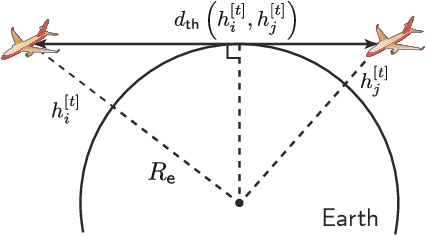
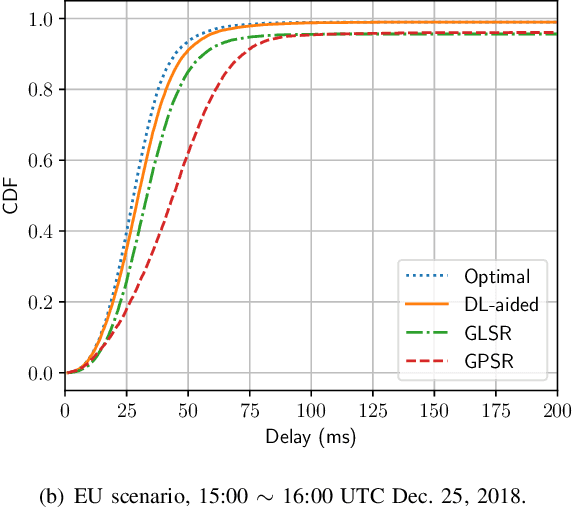

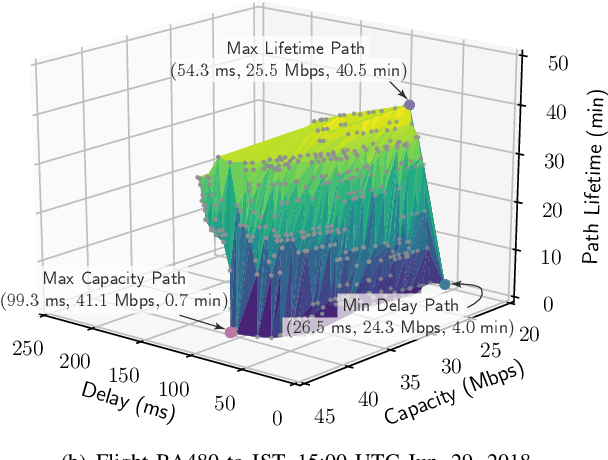
Abstract:Data packet routing in aeronautical ad-hoc networks (AANETs) is challenging due to their high-dynamic topology. In this paper, we invoke deep learning (DL) to assist routing in AANETs. We set out from the single objective of minimizing the end-to-end (E2E) delay. Specifically, a deep neural network (DNN) is conceived for mapping the local geographic information observed by the forwarding node into the information required for determining the optimal next hop. The DNN is trained by exploiting the regular mobility pattern of commercial passenger airplanes from historical flight data. After training, the DNN is stored by each airplane for assisting their routing decisions during flight relying solely on local geographic information. Furthermore, we extend the DL-aided routing algorithm to a multi-objective scenario, where we aim for simultaneously minimizing the delay, maximizing the path capacity, and maximizing the path lifetime. Our simulation results based on real flight data show that the proposed DL-aided routing outperforms existing position-based routing protocols in terms of its E2E delay, path capacity as well as path lifetime, and it is capable of approaching the Pareto front that is obtained using global link information.
Deep Learning Aided Routing for Space-Air-Ground Integrated Networks Relying on Real Satellite, Flight, and Shipping Data
Oct 28, 2021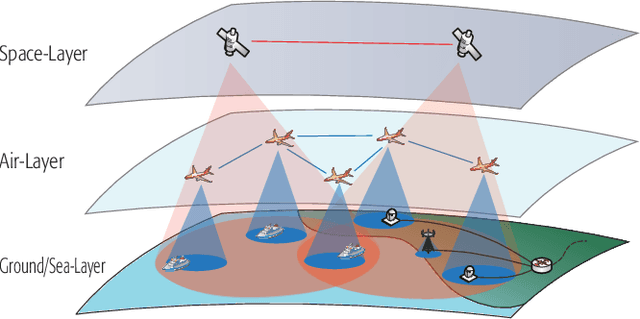
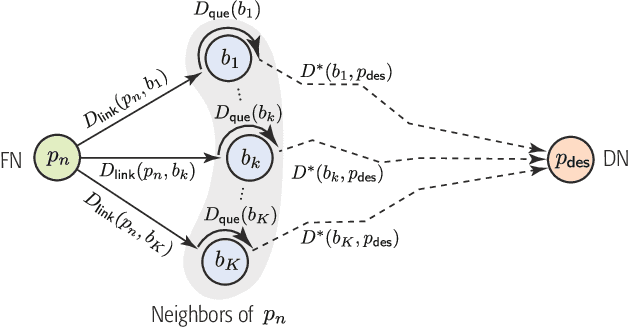
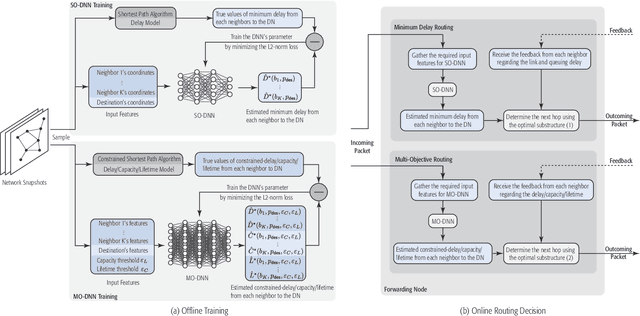
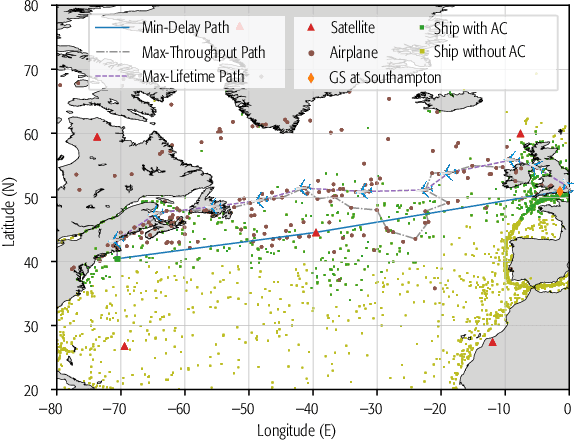
Abstract:Current maritime communications mainly rely on satellites having meager transmission resources, hence suffering from poorer performance than modern terrestrial wireless networks. With the growth of transcontinental air traffic, the promising concept of aeronautical ad hoc networking relying on commercial passenger airplanes is potentially capable of enhancing satellite-based maritime communications via air-to-ground and multi-hop air-to-air links. In this article, we conceive space-air-ground integrated networks (SAGINs) for supporting ubiquitous maritime communications, where the low-earth-orbit satellite constellations, passenger airplanes, terrestrial base stations, ships, respectively, serve as the space-, air-, ground- and sea-layer. To meet heterogeneous service requirements, and accommodate the time-varying and self-organizing nature of SAGINs, we propose a deep learning (DL) aided multi-objective routing algorithm, which exploits the quasi-predictable network topology and operates in a distributed manner. Our simulation results based on real satellite, flight, and shipping data in the North Atlantic region show that the integrated network enhances the coverage quality by reducing the end-to-end (E2E) delay and by boosting the E2E throughput as well as improving the path-lifetime. The results demonstrate that our DL-aided multi-objective routing algorithm is capable of achieving near Pareto-optimal performance.
 Add to Chrome
Add to Chrome Add to Firefox
Add to Firefox Add to Edge
Add to Edge